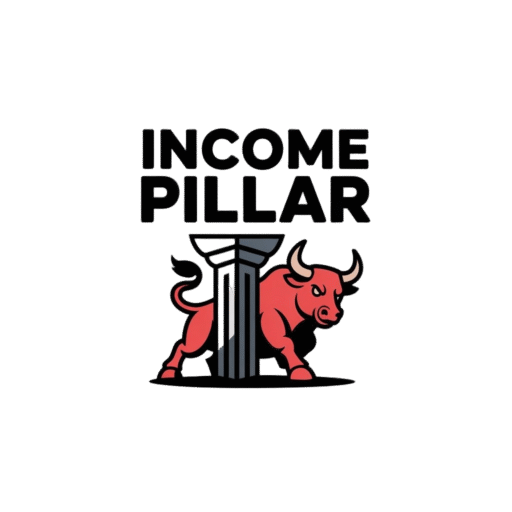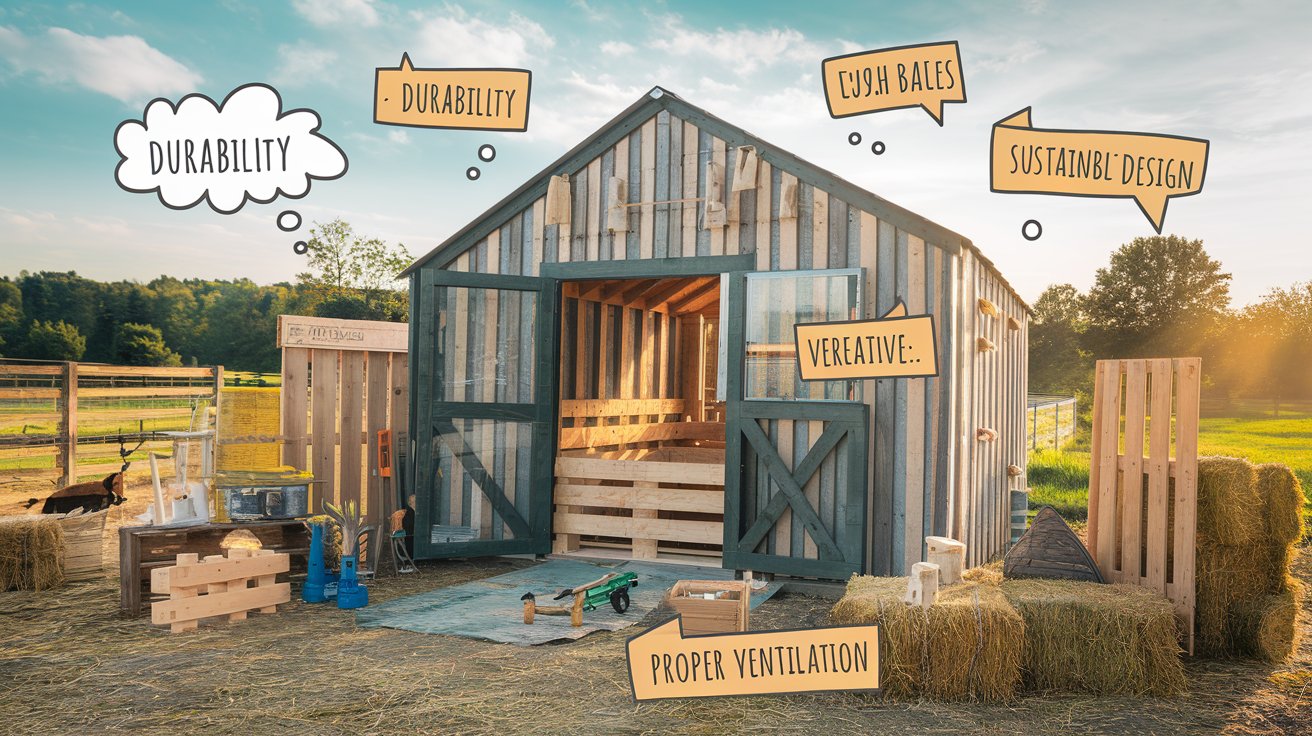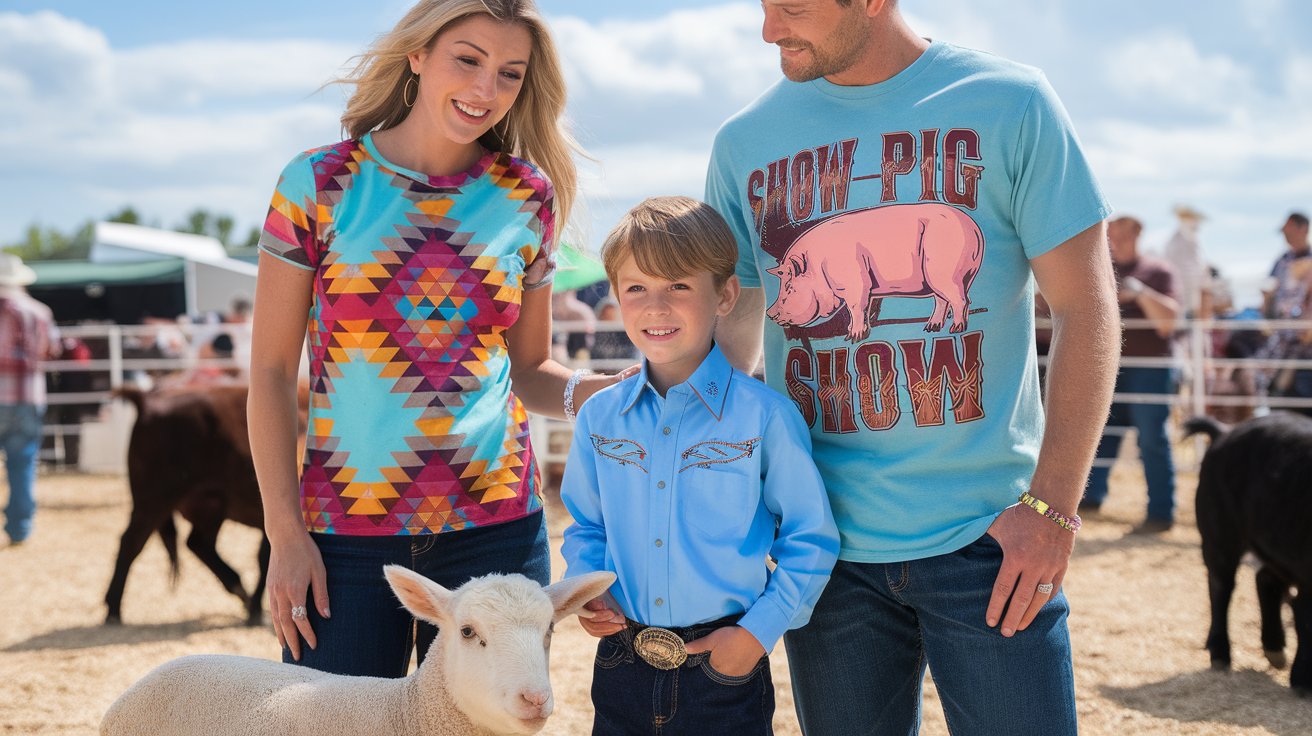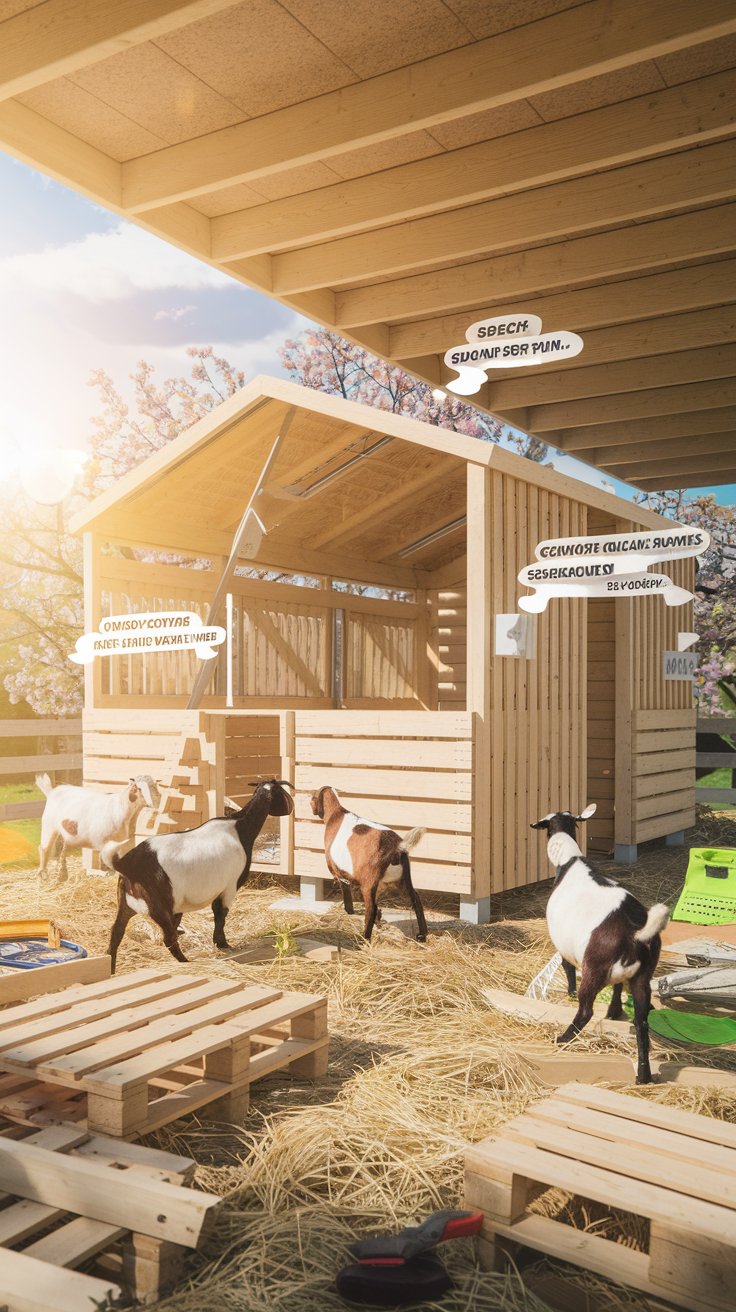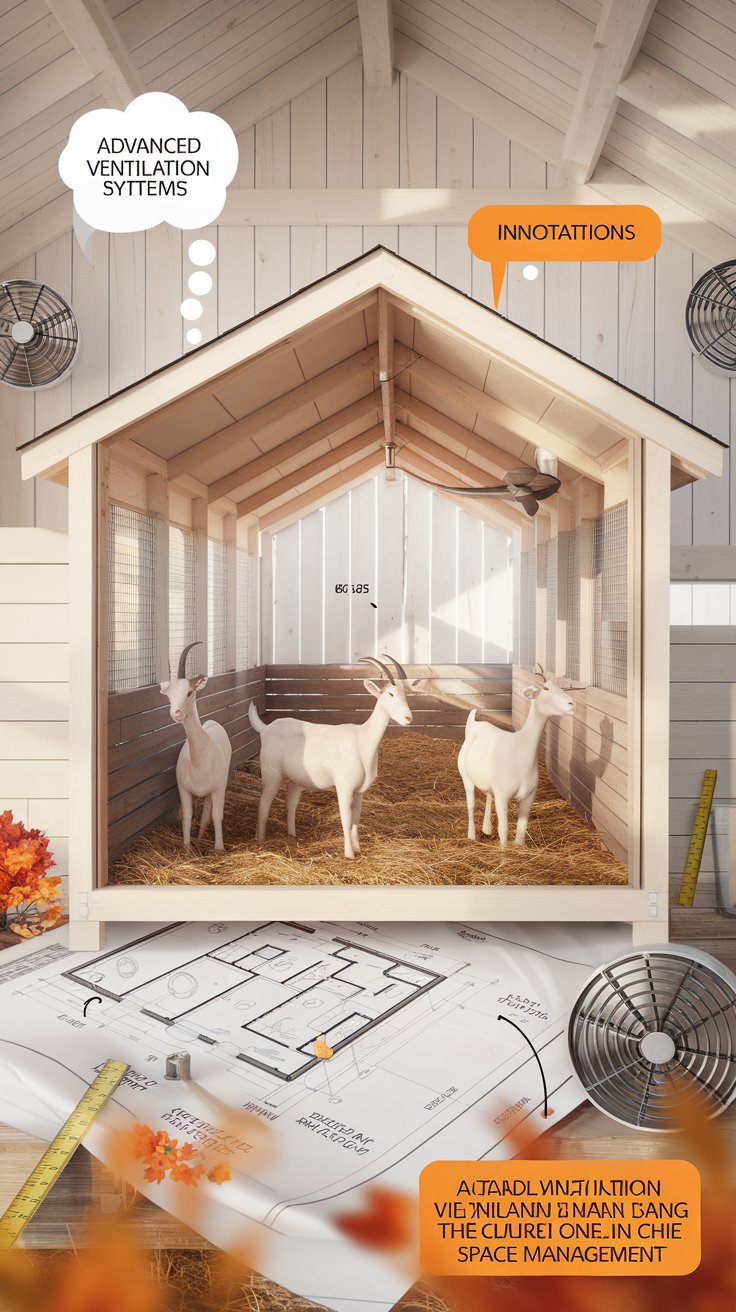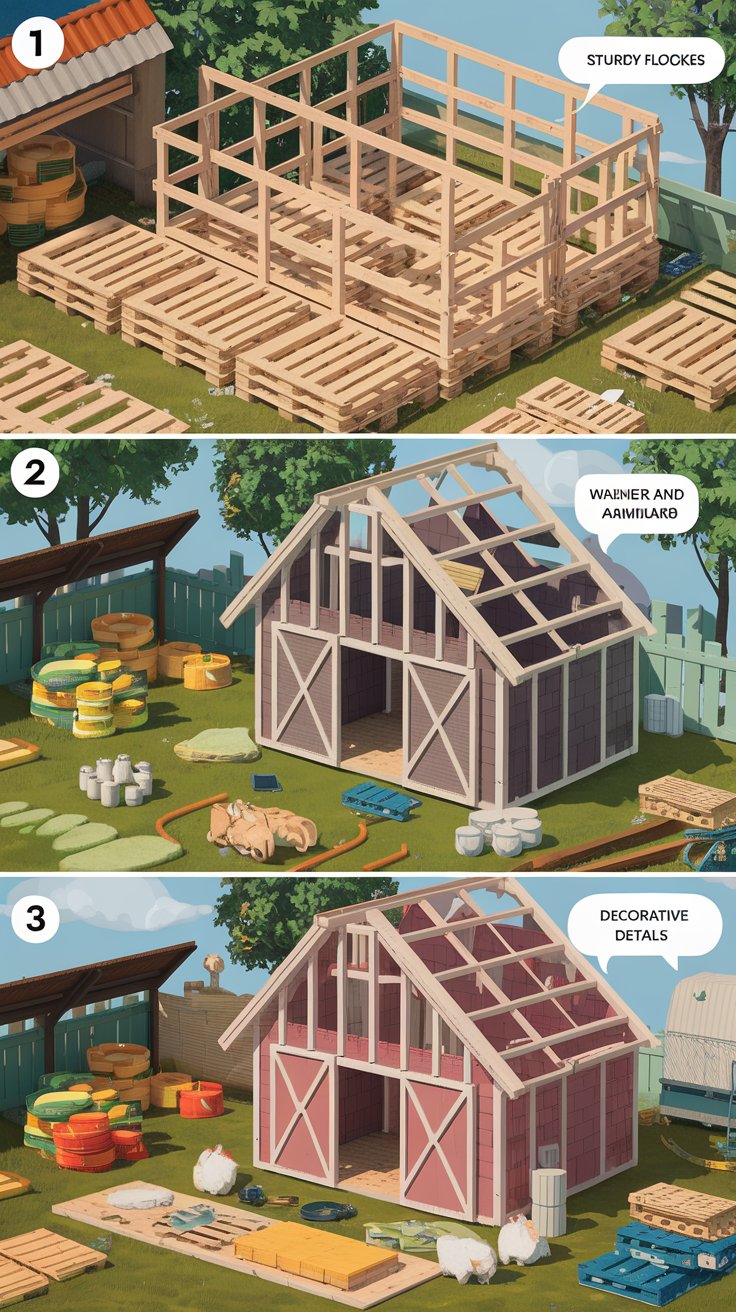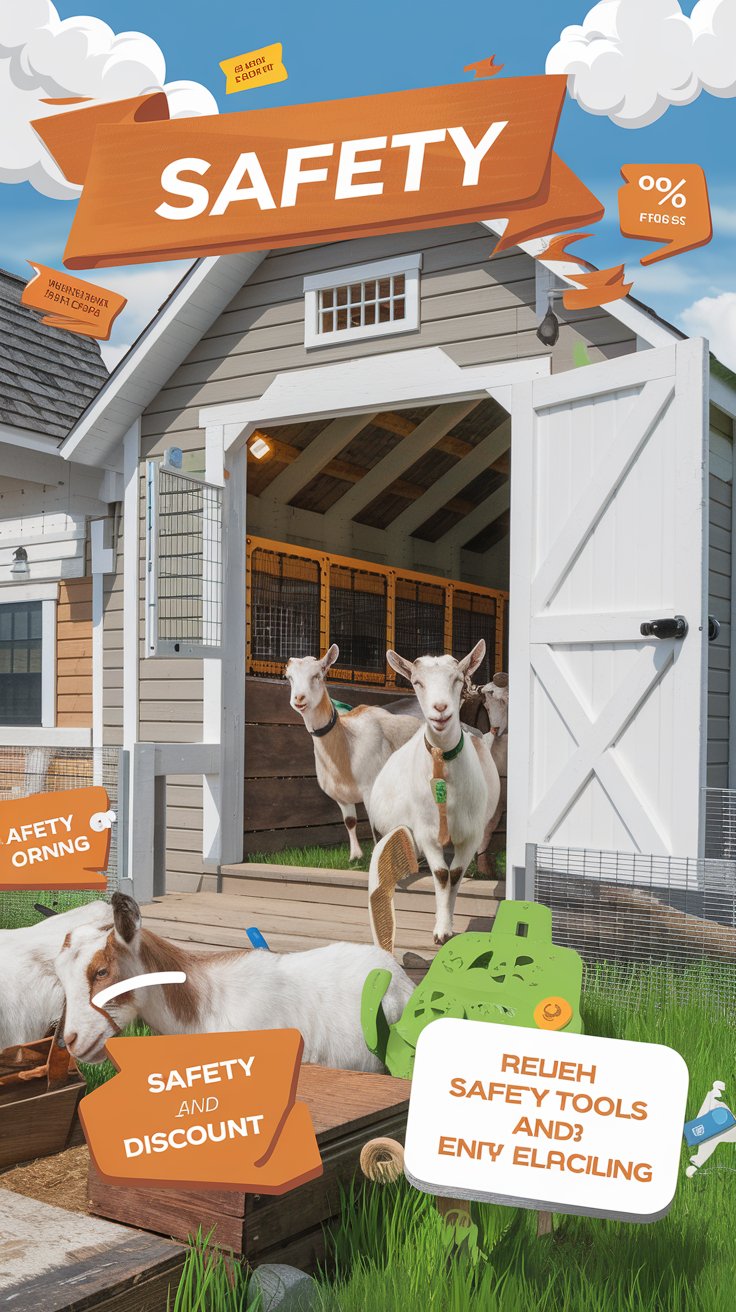Introduction
In today’s sustainable farming landscape, innovative goat shelter designs are transforming livestock care. This comprehensive guide serves as a go-to resource for building a DIY goat shelter—from a simple goat shed to a full-scale goat barn—using reclaimed pallets, plywood, and quality lumber. The step-by-step plans ensure proper ventilation, adequate square feet per goat, and durable insulation, keeping your herd safe, comfortable, and protected from predators and extreme temperatures. All elements combine for effective, lasting shelter.
With creative strategies and detailed guidance, farmers learn to build versatile enclosures that double as secure homesteads and efficient livestock shelters. This guide covers installing durable subfloors, effective drainage, and integrated feeding stations while using frugal methods and etsy discount tips. Emphasizing easy access, proper ventilation, and robust construction, each step helps keep your goats healthy, warm, and safe. Discover beautifully designed tools, checklists, and related posts that make goat barn construction accessible and inspiring.
Key Takeaways
- Innovative goat shelter designs leverage reclaimed pallets and plywood to construct durable and cost-effective DIY goat barns.
- Comprehensive goat shelter plans prioritize proper ventilation and airflow, ensuring each goat enjoys a secure and comfortable environment.
- Detailed step-by-step construction guidelines enable farmers to build goat shelters with adequate square feet per goat, effective insulation, and proper drainage.
- The integration of pallet floor installation and reclaimed materials enhances manure management and overall livestock well-being.
- Incorporating predator-proof features and easy access into goat barns is crucial for maintaining a secure shelter space.
- Budget-friendly approaches, including etsy discount tips, empower farmers to create robust and versatile goat shelters that protect livestock from extreme weather conditions.
Innovative Goat Shelter Designs: Building a Durable DIY Goat Shelter and Goat Barn
Innovative goat shelter designs offer a fresh perspective for building a durable DIY goat shelter and goat barn that meets modern livestock care standards. Using reclaimed pallets, sturdy plywood, and quality lumber, these designs create a secure shelter space with ample ventilation and airflow to keep your goats safe and comfortable. This comprehensive guide details every step—from selecting the right materials to constructing a well-insulated goat shed that protects the herd from extreme temperatures and predators. By following detailed goat shelter plans and a step-by-step approach, every goat farmer can learn how to build a versatile and frugal goat barn that offers enough square feet per goat, effective drainage, and proper temperature control. This innovative design ensures a clean, dry homestead for all your livestock.
Creative DIY Goat Shelter Designs Using Reclaimed Materials
Embracing eco-friendly and cost-effective approaches, creative DIY goat shelter designs using reclaimed materials provide an innovative solution for constructing a secure goat barn. By repurposing pallets and durable plywood, you can build a goat shelter that ensures proper ventilation, effective insulation, and sufficient shelter space for every goat. This comprehensive guide illustrates step-by-step goat shelter plans, highlighting techniques to install pallet floors, integrate adequate ventilation systems, and maintain fresh airflow within the enclosure. The design addresses extreme temperature challenges while protecting livestock from predators. With easy access and proper drainage incorporated into the design, every goat enjoys a safe, clean, and comfortable environment. The plan also covers essential details like manure management and bedding options, ensuring a versatile and durable structure for long-lasting overall performance.
Innovative Goat Barn Construction Techniques for Long-Term Livestock Comfort
Focused on sustainable farming and livestock well-being, innovative goat barn construction techniques emphasize long-term comfort for every goat. These advanced DIY goat shelter plans incorporate durable materials such as quality lumber and reclaimed pallets, ensuring a secure shelter that withstands harsh weather. The design prioritizes proper ventilation, effective airflow, and precise insulation to maintain an optimal temperature even in extreme climates. By integrating practical features like easy access doors, well-planned feeding stations, and spacious goat barns, these techniques provide a comprehensive guide to building a safe and comfortable enclosure. This method enhances manure management and drainage, while also encouraging creative DIY goat shelter designs that cater to both budget-conscious and dedicated farmers aiming to create a clean, dry, and healthy environment for their herd consistently.
Essential Strategies for Creating a Sustainable Goat Shelter
1. Strategic Material Sourcing: Utilize reclaimed pallets, quality plywood, and durable lumber to create a cost-effective yet robust structure that ensures proper insulation and long-term durability. This approach not only reduces waste but also aligns with sustainable farming practices.
2. Optimized Layout and Space Management: Design a layout that maximizes shelter space, ensuring adequate square feet per goat. Incorporate dedicated areas for feeding, manure management, and ventilation while planning for efficient use of space to support healthy livestock movement.
3. Enhanced Ventilation and Insulation Techniques: Implement effective ventilation systems and proper insulation to maintain consistent temperatures and promote airflow. This strategy helps prevent moisture buildup and draft issues, ensuring a comfortable environment for the goats.
4. Robust Safety and Security Measures: Incorporate predator-proofing features such as secure doors, reinforced fencing, and sturdy construction to keep the goats safe. These measures protect the livestock from potential threats and adverse weather conditions.
5. Budget-Conscious Innovations: Leverage creative, cost-effective tips like etsy discount offers and frugal design strategies to build a durable goat shelter without compromising quality. This approach makes sustainable, safe shelter construction accessible to every goat farmer.
Comprehensive Goat Shelter Plans: Ensuring Proper Ventilation, Airflow, and Secure Shelter Space
Comprehensive goat shelter plans provide farmers with a detailed roadmap to creating safe and efficient enclosures for livestock. These plans emphasize the importance of proper ventilation and controlled airflow, ensuring that each goat enjoys a secure shelter space with adequate temperature regulation. Utilizing DIY techniques, such as installing sided shelters, pallet-based floors, and subfloors with quality plywood, helps prevent buildup of manure and dampness. By following a step-by-step guide, even frugal goat farmers can construct goat barns and sheds that protect against harsh weather and predators while maintaining enough square feet per goat. The instructions cover essential elements like insulation, drainage, and ventilation strategies, making it easy to build an easy goat shelter that keeps your herd healthy and comfortable consistently.
Essential Guide to Effective Ventilation Systems in DIY Goat Shelter Plans
Ensuring effective ventilation is a critical component in any comprehensive goat shelter plan. This essential guide explains how a DIY goat shelter can incorporate advanced airflow techniques to maintain fresh air circulation and regulate temperature. Utilizing methods such as installing proper ventilation openings and siding solutions, farmers can build goat barns that offer secure shelter space while minimizing moisture buildup and harmful drafts. The detailed guide outlines step-by-step instructions for assembling ventilation systems using materials like plywood, durable lumber, and reclaimed pallets. Additionally, it provides insights on managing extreme temperatures and humidity, ensuring that every goat enjoys a clean, dry, and comfortable environment. This resource serves as a go-to guide for both novice and experienced farmers aiming to improve livestock safety and overall well-being effectively.
Detailed Steps for Constructing Secure and Durable Goat Enclosures
Following detailed steps is essential when constructing secure and durable goat enclosures. This guide outlines every phase of building a robust goat barn using DIY goat shelter plans, ensuring each component—from the floor to the roofing—meets high standards of livestock care. The instructions include tips for installing proper ventilation, integrating subfloors made from reclaimed pallets and quality plywood, and creating enough shelter space per goat for comfortable living. Farmers will learn how to manage manure buildup, implement insulation, and set up feeding stations to enhance goat well-being. With precise, step-by-step directions, this comprehensive resource empowers both novice and expert homesteaders to build goat shelters that are secure, weather-resistant, and optimized for safe, healthy herd living. These practical guidelines ensure a resilient shelter for thriving goats.
Case Study: Green Pastures Farm’s Innovative Goat Shelter Overhaul
Green Pastures Farm, a well-known entity in sustainable agriculture, embarked on an ambitious project to revamp their goat shelter using comprehensive DIY goat shelter plans. Faced with challenges such as inadequate ventilation and limited shelter space, the farm’s team, led by seasoned farmer John Anderson, implemented a series of strategic improvements. They repurposed reclaimed pallets and quality plywood to construct a robust goat barn, ensuring proper airflow, effective insulation, and ample square feet per goat. By integrating modern ventilation systems and secure fencing, the project not only enhanced the structural durability but also significantly reduced manure buildup and improved livestock well-being.
This case study highlights the practical application of detailed goat shelter plans, where every step—from pallet floor installation to fine-tuning insulation—was meticulously executed. The overhaul at Green Pastures Farm serves as a prime example of how frugal, eco-friendly strategies can be successfully deployed in real-world settings. The project’s success was featured in several livestock care sheets and sustainable farming reports, further establishing the farm’s reputation as an innovator in goat barn construction. This comprehensive approach ensured the goats remained safe, comfortable, and well-protected from extreme weather conditions.
Step-by-Step Goat Barn Construction: From Pallet Floors to Final Thoughts and Table of Contents
Step-by-step goat barn construction empowers farmers to build an efficient shelter by following well-outlined DIY goat shelter plans. Starting with pallet floors and sturdy subfloors, every detail is considered to create a goat barn that offers safe and ample shelter space. The comprehensive guide includes a table of contents, detailed steps, and final thoughts that help homeowners learn how to build a goat shed while managing temperature, insulation, and proper ventilation. Using materials like plywood, lumber, and even a tarp for added moisture protection, this method ensures each goat has enough square feet to thrive. With clear instructions and a focus on durable construction, the guide serves as a go-to resource for building a reliable, secure, and comfortable shelter for your livestock for lasting success.
Pallet Floor Installation: A Key Component in Goat Barn Construction
Installing a reliable pallet floor is a key component in building a robust goat barn. This guide explains the step-by-step process to create a durable goat shelter by repurposing pallets and integrating quality subfloors. By using reclaimed wood and durable plywood, farmers can design a stable floor that supports proper ventilation and effective manure drainage. The DIY goat shelter plans emphasize the importance of secure and even flooring to prevent drafts and maintain comfortable temperatures. Detailed instructions cover measuring square feet per goat, ensuring easy access, and enhancing the overall integrity of the goat barn. With practical tips and budget-friendly advice, this comprehensive guide empowers homesteaders to build a safe, resilient, and well-insulated livestock shelter. These steps ensure a smooth, long-lasting floor installation overall efficiently.
Integrating Final Touches: Insulation, Ventilation, and Detailed Planning for DIY Goat Barns
Integrating final touches is crucial for achieving a high-quality DIY goat barn that meets all livestock care requirements. This phase involves adding insulation, fine-tuning ventilation systems, and finalizing detailed planning as outlined in the comprehensive guide. Farmers are encouraged to use durable materials like quality plywood and reclaimed lumber while incorporating elements such as feeding stations, bedding areas, and proper drainage systems. The guide emphasizes measuring adequate square feet per goat and ensuring secure, draft-free shelter spaces. With step-by-step instructions and practical DIY goat shelter plans, homesteaders can address challenges like extreme temperatures and humidity. These final enhancements result in a versatile and safe goat barn that supports long-term herd health and overall comfort. They ensure a polished finish and sustainable, enduring barn performance remarkably.
“The details are not the details. They make the design.” — Charles Eames
Enhancing Livestock Safety: Protecting Goats from Predators with Easy Access Shelters and Etsy Discount Tips
Enhancing livestock safety is paramount when designing goat shelters that protect your herd from predators. Innovative designs combine secure enclosures with easy access features and well-thought-out ventilation systems, ensuring each goat enjoys fresh air and adequate temperature control. DIY goat shelter plans now include creative ideas such as integrating pallet materials, durable subfloors, and insulated goat barns that offer enough square feet per goat. Farmers can also incorporate unique elements like a feeding station and bedding areas to boost the overall well-being of their livestock. With helpful etsy discount tips and related posts to guide you, this comprehensive guide serves as a go-to resource for building shelters that are aesthetically pleasing, robust, and secure, keeping goats safe and comfortable in weather conditions in challenging climates.
Strategies for Predator-Proofing Goat Shelters with Enhanced Security Features
Implementing strategies for predator-proofing goat shelters is vital for enhancing livestock safety and maintaining a secure goat barn. This guide outlines practical measures, including reinforced door designs, secure enclosures, and proper ventilation that prevents unwanted drafts. By integrating durable materials such as quality lumber, reclaimed pallets, and sturdy plywood, farmers can create a goat shelter that offers sufficient shelter space and effective protection against predators. The DIY goat shelter plans provide step-by-step instructions for installing secure fencing, managing manure buildup, and ensuring easy access for daily maintenance. With detailed insights on insulation and airflow, the guide ensures every goat remains safe and comfortable even in extreme weather conditions while keeping livestock well-being as the top priority. These measures significantly boost overall goat shelter security daily.
Incorporating Modern Etsy Discount Tips to Improve Goat Barn Safety and Accessibility
Incorporating modern Etsy discount tips into goat barn construction can significantly improve safety and accessibility for livestock. This guide demonstrates how cost-effective solutions and creative DIY goat shelter plans combine to enhance the security and functionality of goat enclosures. By utilizing budget-friendly materials such as reclaimed lumber and quality plywood, farmers can design goat barns that not only offer sufficient shelter space but also feature easy access for maintenance and feeding. The guide emphasizes practical enhancements like durable doors, secure locks, and proper ventilation to protect goats from predators and harsh weather conditions. Detailed steps and creative strategies, including etsy discount offers, provide valuable insights for constructing shelters that are both economical and effective in promoting livestock well-being. This smart approach ensures optimal barn performance.
Conclusion
This comprehensive guide has shown how to build a durable DIY goat shelter and goat barn that meets modern livestock care needs. By utilizing reclaimed pallets, quality plywood, and proper ventilation, you can construct a secure, well-insulated shelter that protects every goat from extreme temperatures and predators. The step-by-step goat shelter plans ensure adequate square feet per goat, effective manure management, and excellent airflow, making the structure a reliable homestead asset.
In summary, this guide serves as a go-to resource for farmers seeking to create a clean and dry goat shed with easy access and sturdy construction. Detailed instructions—from pallet floor installation to final thoughts and etsy discount tips—help keep your goats safe and comfortable. With a focus on proper ventilation, drainage, and durable materials, this comprehensive resource empowers every frugal goat farmer to build a safe, efficient, and comfortable shelter.

